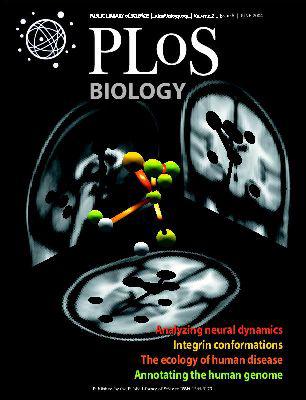Changes in sea floor productivity are crucial to understanding the impact of climate change in temperate coastal ecosystems according to a new size-based model
IF 7.8
1区 生物学
Q1 BIOCHEMISTRY & MOLECULAR BIOLOGY
引用次数: 1
Abstract
The multifaceted effects of climate change on physical and biogeochemical processes are rapidly altering marine ecosystems but often are considered in isolation, leaving our understanding of interactions between these drivers of ecosystem change relatively poor. This is particularly true for shallow coastal ecosystems, which are fuelled by a combination of distinct pelagic and benthic energy pathways that may respond to climate change in fundamentally distinct ways. The fish production supported by these systems is likely to be impacted by climate change differently to those of offshore and shelf ecosystems, which have relatively simpler food webs and mostly lack benthic primary production sources. We developed a novel, multispecies size spectrum model for shallow coastal reefs, specifically designed to simulate potential interactive outcomes of changing benthic and pelagic energy inputs and temperatures and calculate the relative importance of these variables for the fish community. Our model, calibrated using field data from an extensive temperate reef monitoring program, predicts that changes in resource levels will have much stronger impacts on fish biomass and yields than changes driven by physiological responses to temperature. Under increased plankton abundance, species in all fish trophic groups were predicted to increase in biomass, average size, and yields. By contrast, changes in benthic resources produced variable responses across fish trophic groups. Increased benthic resources led to increasing benthivorous and piscivorous fish biomasses, yields, and mean body sizes, but biomass decreases among herbivore and planktivore species. When resource changes were combined with warming seas, physiological responses generally decreased species’ biomass and yields. Our results suggest that understanding changes in benthic production and its implications for coastal fisheries should be a priority research area. Our modified size spectrum model provides a framework for further study of benthic and pelagic energy pathways that can be easily adapted to other ecosystems.根据一种基于尺寸的新模型,海底生产力的变化对于了解气候变化对温带沿海生态系统的影响至关重要
气候变化对物理和生物地球化学过程的多方面影响正在迅速改变海洋生态系统,但往往被孤立地考虑,使我们对这些生态系统变化驱动因素之间的相互作用的理解相对较差。对于浅海生态系统来说尤其如此,这些生态系统是由不同的上层和底栖能量途径组合而成的,它们可能以根本不同的方式对气候变化作出反应。这些系统支持的鱼类生产可能受到气候变化的影响,这与近海和大陆架生态系统的影响不同,后者的食物网相对简单,而且大多缺乏底栖生物的初级生产来源。我们开发了一种新的、多物种大小的浅海珊瑚礁光谱模型,专门用于模拟底栖生物和远洋生物能量输入和温度变化的潜在交互结果,并计算这些变量对鱼类群落的相对重要性。我们的模型使用广泛的温带珊瑚礁监测项目的现场数据进行校准,预测资源水平的变化将对鱼类生物量和产量产生更大的影响,而不是由温度生理反应驱动的变化。在浮游生物丰度增加的情况下,预计所有鱼类营养类群的生物量、平均大小和产量都会增加。相比之下,底栖生物资源的变化在鱼类营养群体中产生了不同的反应。底栖生物资源的增加导致了食性和食性鱼类的生物量、产量和平均体型的增加,但草食和浮游生物的生物量减少。当资源变化与海洋变暖相结合时,生理反应通常会降低物种的生物量和产量。我们的研究结果表明,了解底栖生物产量的变化及其对沿海渔业的影响应该是一个优先研究领域。我们改进的尺寸谱模型为进一步研究底栖生物和远洋生物的能量途径提供了一个框架,可以很容易地适应其他生态系统。
本文章由计算机程序翻译,如有差异,请以英文原文为准。
求助全文
约1分钟内获得全文
求助全文
来源期刊

PLoS Biology
生物-生化与分子生物学
CiteScore
14.40
自引率
2.00%
发文量
359
审稿时长
3 months
期刊介绍:
PLOS Biology is an open-access, peer-reviewed general biology journal published by PLOS, a nonprofit organization of scientists and physicians dedicated to making the world's scientific and medical literature freely accessible. The journal publishes new articles online weekly, with issues compiled and published monthly.
ISSN Numbers:
eISSN: 1545-7885
ISSN: 1544-9173
 求助内容:
求助内容: 应助结果提醒方式:
应助结果提醒方式:


